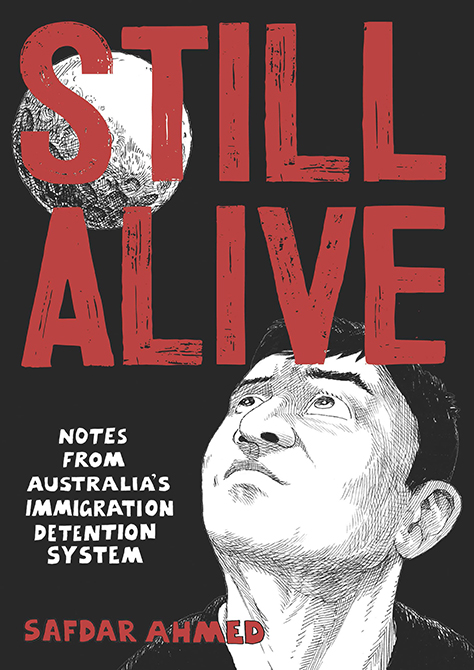World Refugee Week is an apt time to see the plight of asylum seekers and to hear their stories, but it is often hard to do so when these people are deliberately placed so far out of sight in detention. How can we sharpen the blurred images of those we dehumanise, and bring the face and humanity of the asylum seeker back into focus?
As a Christian, I believe that all humans are made in the image of God, and that blurring people’s humanity goes against God’s grain. I take as my starting point the fact that God made me and every other human, and that when God did so, it was with a tender artist’s hand. In Psalm 139 a song-writer brings to mind the Creator’s most intimate creative activity: ‘for you created my inmost being; you knit me together in my mother’s womb’. Brian S. Rosner reflects that ‘as artists know their work, so the psalmist infers that God our Creator knows what he has made’ (Known by God: A Biblical Theology of Personal Identity, 2017).
World Refugee Week is an apt time to remember that artistic expression can be a way that we can see people and ‘hear’ their stories, stories that are intimate and important to them, but otherwise not publicly told. In Still Alive: Notes from Australia’s Immigration Detention System (2021), the comic book artist Safdar Ahmed incorporates the comic art of a drawing group he started at Villawood Detention Centre. Still Alive shows us the abject plight of asylum seekers by sharing their stories through comic art.

We can’t pretend we don’t know about the poor mental health of detainees and the tragic suicides in places like Villawood — these statistics still bubble up in the media. But because these detainees have been dehumanised, and their dignity and human agency erased, their individual stories and the reasons they reach a point of desperation in detention are rarely heard.
Still Alive particularly relies on the symbolism of the art of one detainee — Mazhar — for inspiration. Mazhar’s drawings of an eye, melting face and wave are visual metaphors that convey the overwhelming experience of being under surveillance. Ahmed notes that there is a ‘compactness’ and intensity’ in Mazhar’s drawing, such that ‘The brain. The eye. The hand. The line. All come together on the page’. Pictures can tell compact and painful stories where words can fail.
Mazhar’s confidently-executed visual metaphors, and their intense yet less-than-straightforward connotative effects, are a form of resistance against the linear life-stories that asylum seekers are forced to recite over and over for Australian government officials in the asylum process. Still Alive shows that this requirement creates its own trauma, because ‘personal histories cannot always be narrated concisely’, and each time a person fails to narrate a clear history, the verbal tangle becomes their entrapment, represented visually by a tangled net that comes out of an interviewee’s mouth.
Many of Ahmed’s friends are part of the ‘deportspora’, people with unending stories of precarious displacement and deportation, removal and return. Peter Nyers, a scholar of the politics of citizenship, considers that countries like Australia need to place asylum seekers in places of abject limbo, that rights are removed and voices are silenced in order to shore up a stable sense of citizenship for the rest of us.
'Still Alive resists the temptation to attempt to restore dignity to lives by shaping inspiring coming-of-age narratives or giving refugees a grand epiphany to share. It doesn’t show any neat progression from victim to survivor, or from silence to speech, and it doesn’t show any way to transcend a situation of suspended rights.'
Ahmed represents Yusuf, a Hazara asylum seeker from Afghanistan, as a face crumbling into fragments. We could link the crumbling here to the edifice of Australian bureaucracy, an edifice that takes a human being, living flesh and blood, and turns it into lifeless rubble to be swept away. Yusuf’s eyes have an intense and demanding gaze to go along with his assertion that he is a ‘refugee’ and ‘I only came here to save my life and Australian politicians tried to destroy me’. There is an uneasy paradox in this image and its words: Yusuf’s voice is strident even though his face has no functioning mouth; he is turning into rubble and splintered bone but is not (yet) lifeless.
Still Alive resists the temptation to attempt to restore dignity to lives by shaping inspiring coming-of-age narratives or giving refugees a grand epiphany to share. It doesn’t show any neat progression from victim to survivor, or from silence to speech, and it doesn’t show any way to transcend a situation of suspended rights. Rather, the comic book narrative is a gentle untangling, or pulling apart, of different life stories.
The stories in Still Alive represent a ‘polyphony’ of voices and resist the idea that there can be, or should be, one unified and credible refugee story. Still Alive shows that stories are best told in a way that honours the diversity of lived experience. We should not pretend that stories can be constructed in a narrative vacuum, that the conditions at Villawood or other detention facilities do not shape how these stories are told.
Danielle Terceiro is a Research Fellow at the Centre for Public Christianity and it completing her PhD at Alpha Crucis University College in Literature and Theology.